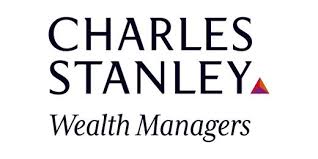Although the content(s) of the article were correct at the time of writing, the accuracy of the information contained within may no longer be current, as it may have been subject to subsequent tax, legislative or event changes. To browse more recent content, please see our Knowledge Centre.
This month:
Markets send mixed messages
Mixed messages from markets raise questions.
FTSE 100’s large overseas earners seem safe harbour.
Japan begins to look attractive again .
Subdued returns expected for second half.
Featuring this month’s experts:
Shares continue to make good progress in most markets, but geopolitical risk just keeps ratcheting up.
Here, leading wealth managers from our panel explain key opportunities and risks to look out for as we enter autumn, covering interest rate changes, the prospects for global equities and the possible consequences of excess liquidity.
Let’s not get too carried away
Insights from:

Dean Turner, an economist at UBS Wealth Management, says:
On 14 September, the Bank of England Monetary Policy Committee sat down once again to make its decision on interest rates. Neither the 7-2 vote nor the more hawkish tone of the committee’s minutes presented a great surprise.
More notable than the decision itself was the move in sterling and gilts. With this, the MPC succeeded in injecting some fuel into the debate about when the next change in rates will be.
The hints that a withdrawal of stimulus is likely in the coming months if growth holds up, and that rates could rise faster than the market thinks, has certainly given investors food for thought. Recent labour market data, hot on the heels of the rebound in inflation, gives the hawks even more ammunition.
Ultimately the decision will come down to how the economy performs. It’s our view that growth is likely to weaken in the months ahead. Households will continue to feel the squeeze, as wage growth struggles to offset the impact of rising prices on the High Street. Business investment is likely to remain subdued until we have greater clarity on the Brexit negotiations, or at least a calmer political backdrop.
![]()
An economy that is delivering weaker growth is not an environment that is particularly conducive to raising interest rates, not least with the March 2019 Brexit deadline just around the corner. We expect the bank to stand pat for the time being, and this is likely to put a ceiling on sterling’s gains for now.
Of course, it is not all doom and gloom. There is some hope that exports will rise, benefitting from the weaker pound (though the evidence is not encouraging so far).
But an economy that is delivering weaker growth is not an environment that is particularly conducive to raising interest rates, not least with the March 2019 Brexit deadline just around the corner. We expect the bank to stand pat for the time being, and this is likely to put a ceiling on sterling’s gains for now.

Dean Turner
An economist at UBS Wealth Management
The mixed messages are concerning
Insights from:

Ben Kumar, Investment Manager at Seven Investment Management, says:
When we look at the financial markets, the mixed messages are concerning. By extrapolating today’s low interest rate environment almost indefinitely into the future, quality government bond markets are looking expensive. However, central banks are indicating that the overall direction of travel is towards higher interest rates. Meanwhile, equity markets are agreeing with the central banks and are moving higher. At some point, the difference between these two views will need to be reconciled.
If the bond market is correct, then the world is still very much in a critical condition, requiring that emergency monetary policy be maintained. This is unlikely to be good for the equity market – imagine the surprise if Janet Yellen cut rates at the next Federal Reserve meeting. If equity markets are sending the correct message, i.e. that the global economy is resilient, the resulting rate rises could cause distress in bond markets.
![]()
Seven Investment Management remains cautiously positioned – both with respect to duration and to equity markets.
Another scenario sees an equity market sell-off that is not related to interest rate policy but down to something else. While these kind of risks are difficult to call ahead of time, there are times when positioning for them feels more comfortable.
Seven Investment Management remains cautiously positioned – both with respect to duration and to equity markets. We are prepared to forgo gains in fixed income assets that are predicated on low rates, just as we are prepared to lag a further step up in equity markets that increasingly seem to be ignoring downside risks at a moment in time when they appear to be increasing.

Ben Kumar
Investment Manager at Seven Investment Management
Our strategy is to stay invested in world share markets
Insights from:

John Redwood, Chief Global Strategist at Charles Stanley, says:
At Charles Stanley, we sometimes wish we had worried less. The extraordinary thing about investing over the last eight years since the global financial crisis has been the relative lack of bad surprises and the good progress made by shares in most of the major markets.“The reason is simple: the main central banks of the advanced world have decided to be very supportive of their economies and markets. They have kept interest rates low and created money to buy bonds for themselves through quantitative easing.
![]()
We see these trends continuing, so our strategy is to stay invested in world share markets and ignore the argument that we are now near the top of the business cycle.
Inflation has stayed low despite these monetary experiments. This has reflected the large migrations of labour to the places with jobs, and the impact of the internet economy keeping prices down. The web has also driven cheaper models of services and allowed global price comparison from home. Companies with great business models capable of exploiting the large technical changes have made significant amounts of money – and this has been beneficial to their share prices.
We see these trends continuing, so our strategy is to stay invested in world share markets and ignore the argument that we are now near the top of the business cycle.
There are still plenty of things to worry about: it is still possible central banks could make mistakes and derail recovery; it is always possible governments will tax too much or go to war or take other action harmful to economic output. We watch and worry a lot, but keep telling ourselves you can also worry too much.

John Redwood
Chief Global Strategist at Charles Stanley
Equity markets remain resilient despite Q3 natural disasters
Insights from:

Alexander Balfour, Associate Director at Smith & Williamson, says:
Geopolitical concerns, predominantly surrounding North Korea, and natural disasters in the US are in part leading to a ‘risk-off’ tone for areas of the market as we head towards the end of the third quarter. Among the uncertainty, we are looking for opportunities to pick up global equities matched with an allocation to gold, which has been one of the few assets to exhibit a negative correlation to equity markets recently.
Considering these headwinds, equity markets have remained relatively resilient, aided by modestly improving global economic growth, and subdued levels of inflation meaning central banks appear in less of a rush to tighten monetary policy when compared to earlier in the year. On a regional basis, though the eurozone is enjoying a brighter economic backdrop this is tempered by the strength of the euro which threatens to derail the area’s cyclical recovery, with many of the region’s companies reliant on exports.
![]()
Among the uncertainty, we are looking for opportunities to pick up global equities matched with an allocation to gold, which has been one of the few assets to exhibit a negative correlation to equity markets recently.
Conversely, the dollar weakness has provided support for emerging markets and with the US likely to run a greater fiscal deficit under President Trump’s tenure we expect them to continue to outperform their developed market peers as the year goes on.
In the UK, both household spending and business investment slumped in Q2. Indeed, record low household savings rates and elevated levels of consumer debt could further hold back consumption this year, particularly with real wage growth remaining negative, pressuring disposable income. This means that we continue to be underweight on more domestically-focused mid and small caps, favouring the large overseas earners of the FTSE 100.

Alexander Balfour
Associate Director at Smith & Williamson
Rising interest in Japan
Insights from:

Simon Doherty, Lead Portfolio Manager, Managed Portfolio Services, at Quilter Cheviot Investment Management, says:
Investors have long been cautious about Japan, but we believe its investment case has improved materially over recent years. Japan is a strong beneficiary of a pick-up in global growth; it has a significant export industry, and is well positioned to capitalise on positive global manufacturing Purchasing Managers’ Index (PMI) readings; corporate governance improvements are coming through; and it is easy to forget that Japan remains a major centre of innovation. From a valuation perspective, the market itself looks relatively cheap versus its international peers, at a time when it is very difficult to call any major asset class cheap.
Within our Managed Portfolio Service (MPS) strategies, our exposure to Japan is composed of several differentiated holdings, one of which – the Baillie Gifford Japanese Income Growth fund – is a relatively new addition. This fund is run by Matthew Brett and the highly-regarded Japanese equity team at Baillie Gifford, and was launched in July 2016 with a focus on identifying high-quality companies with strong growth potential, as well as an attractive dividend policy.
![]()
Investors have long been cautious about Japan, but we believe its investment case has improved materially over recent years.
Japan certainly isn’t without its risks, and for all those with a more bullish outlook, there are others that question the investment case, with concerns about a poor demographic profile and continued scepticism surrounding the advent of more shareholder-friendly policies.
Today, the Japanese market tends to move in lockstep with any major move in the currency. Given the yen is traditionally seen as a safe haven asset, any major global sell-off is likely to see yen strength and Japanese market weakness. However, alongside European equities we currently see this as one of the more attractive areas to invest.

Simon Doherty
Lead Portfolio Manager, Managed Portfolio Services, at Quilter Cheviot Investment Management
Stock market investing: Why we believe passive is superior to active
Insights from:

Christian Armbruester, Chief Executive of Blu Family Office, says:
Shares have become more volatile recently – does this mean we need to become more active in our allocations?
Nobody beats the market’, ‘the market is always right’ – these are all well-known and generally accepted attributes of the stock market. We have decades of empirical evidence that proves that active investing does not add any value. Yet, still we have this debate about whether it would be a good idea to pick individual stocks and, worse, pay someone to do it for you.
This discussion has been intensified by the additional transparency that is now required of collective investment vehicles (e.g. funds) to show all their direct and indirect fees.
Furthermore, there is an increasing availability of low-cost funds that can give you exposure to the major market indices for less than 0.10%. For the active manager, this has meant that to outperform the (market) benchmark, one would not only have to cover the additional costs of an active portfolio (e.g. labour, technology, systems), but also get lucky. After all, 85% of any stock’s risk is the market and this makes the entire process somewhat random.
![]()
There is an increasing availability of low-cost funds…For the active manager, this has meant that to outperform the (market) benchmark, one would not only have to cover the additional costs of an active portfolio but also get lucky.
Therefore, we are passive investors. Where do we add value? Firstly, we understand the drivers of our returns much better by separating the market exposure from the active (smart) part. Say you add value by picking a stock that outperforms the benchmark by 1%, yet at the same time the market is down 50%, then you have still lost money. If, however, you hedge the market risk and your same stock pick outperforms, then the value you have created is insulated, and can be extracted and monitored much more efficiently. At the very least, you won’t be overpaying for taking simple market risk.

Christian Armbruester
Chief Executive of Blu Family Office
Subdued returns for the second half
Insights from:

Larry Hatheway, Group Head of GAM Investment Solutions and Group Chief Economist at GAM, says.
Investors should expect more subdued returns in the second half of 2017. Equity markets have rallied in all-but interrupted manner for twelve months and are showing some signs of fatigue owing to more demanding valuations and the closing out of a positive earnings season. While geo-political risk can and has increased near-term volatility, the case for equities rests on continued moderate global growth accompanied by low inflation.
Global bond yields have continued to oscillate within ranges, below their peak levels at the end of the first quarter. Lower than expected inflation has supported the bond market, despite signs that the Federal Reserve remains committed to its policy of normalisation and expectations that the ECB will soon announce a 2018 tapering of its balance sheet.
The dollar has suffered a large depreciation over the last few months. Yet further dollar weakness appears unlikely for several reasons. First, speculative positions in the market are heavily concentrated in short dollar positions, suggesting less selling pressure going forward. Second, investors no longer anticipate that the Fed will raise interest rates before year end. That is probably wrong.
![]()
While geo-political risk can and has increased near-term volatility, the case for equities rests on continued moderate global growth accompanied by low inflation.
Although the Fed’s next move is likely to focus on gradual reduction in its balance sheet, the majority on the Federal Open Market Committee believe that US monetary policy remains highly accommodative, particularly against the backdrop of a more fully employed economy. The Fed is therefore likely to raise rates one more time this year, most probably in December, which should provide support for the dollar.
The economic expansion underway in most emerging economies looks sustainable. Concerns about China’s growth are never far from the surface, particularly as the credit impulse has turned negative, suggesting some further slowing in property and fixed asset investment.
Elsewhere, the green shoots of recovery are beginning to appear in Brazil and much of central Europe is benefitting from stronger European growth. Overall, moderate growth in the emerging complex is probable over the balance of 2017.

Larry Hatheway
Group Head of GAM Investment Solutions and Group Chief Economist at GAM
Is excess liquidity a major future risk?
Insights from:

Thomas Becket, Chief Investment Officer at Psigma Investment Management, says:
In a recent interview, I was asked what the key lessons were that investors have learned since the financial crisis.
One of the major ones has been wholeheartedly grasped, in that the key determinant that investors need to keep in mind is whether new liquidity, normally in the form of debt but also central bankers’ ‘monetary magic money’, is being created. Fresh money does undoubtedly support asset prices, from football players and fine art all the way through to stock prices and property. Interestingly, investor complacency seems to be growing at a time of stretched valuations, just as central bankers are supposedly about to tighten liquidity. Our approach has been to pursue lower levels of risk than we have done for much of the last eight years, just as others appear to be taking more.
![]()
The economic conditions of the last few years have been insipid, but yet asset prices have boomed, showing that specific investment fundamentals should be focused on.
Another lesson is clearly that you don’t need lots of economic growth to generate positive asset market returns. The economic conditions of the last few years have been insipid, yet asset prices have boomed, showing that specific investment fundamentals should be focused on.
That being said, my strong view is that the relationship between excess liquidity and asset prices, as shown through the rapid rise of passive investing, is a major risk for the future. There seems little doubt that the easy liquidity conditions have fuelled a passive bubble which could easily pop when central bankers start to finally tighten monetary policy

Thomas Becket
Chief Investment Officer at Psigma Investment Management
A huge range of factors to keep abreast of this autumn
Insights from:

Lee Goggin, Co-founder of findaWEALTHMANAGER.com, says:
While North Korea-inspired political tension has tended to focus minds, markets continue to grind slowly higher; throw any kind of bad news into the mix and stock indices just bounce back. A recent article noted that the main players in this are a 71-year-old businessman with a bad temper and a 33-year-old dictator surrounded by sycophants. The hope is that they don’t misunderstand or miscalculate each other’s actions. Despite this alarming situation, markets remain calm. The wall of money seeking a return is ever present.
![]()
There are a huge range of factors for investors to keep abreast of as we enter autumn, which is why many people get great comfort from having a wealth manager on hand keeping track of them all.
As a backdrop to all of this, we note gold is attracting plenty of interest as a safe haven and recently reached its highest level since the middle of last year. This is a logical move considering what is going on in the world.
Elsewhere, the euro marches on and nudges the 1.20 level versus the dollar. European data has been encouraging and after 10 years of mediocre growth across the region, economic confidence looks brighter. Looking forward, we have the German Election to focus on. Not much can be expected there, as Frau Merkel is likely to win her fourth and final term; so more of the same, which is no bad thing, let’s be honest.
There are a huge range of factors for investors to keep abreast of as we enter autumn, which is why many people get great comfort from having a wealth manager on hand keeping track of them all – as well as all the other factors determining whether your money is working as hard as possibly it can.

Lee Goggin
Co-founder of findaWEALTHMANAGER.com
Important information
The investment strategy explanations contained in this piece are for informational purposes only, represent the views of individual institutions, and are not intended in any way as financial or investment advice. Any comment on specific securities should not be interpreted as investment research or advice, solicitation or recommendations to buy or sell a particular security.
We always advise consultation with a professional before making any investment decisions.
Always remember that investing involves risk and the value of investments may fall as well as rise. Past performance should not be seen as a guarantee of future returns.
